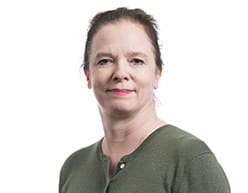The value of community has come into sharp relief since the COVID pandemic. Enforced isolation during lockdown demonstrated the power of, and the need for, human connection in supporting health and well-being.
“For us, social value means community. We build physical real estate that creates an environment in which communities can grow and flourish.” Mark Allnutt, Greystar
For Greystar, the global investor, developer and operator of purpose-built rented homes, community building is already a key part of its business strategy and one against which business targets are set. “Each year, one of the things I’m judged on is how I built community in my region, it's extremely important for us,” says Mark Allnutt, Senior Managing Director, Europe at Greystar.
As a business building new homes for markets with high demand, there is arguably already a level of social value. Greystar’s build to rent model gives access to homes of a consistent level of quality for those who have been priced out of the market to buy and also for those looking for more affordable rents.
But it’s not just about the number of units, the business is looking to add social value by enabling those living in their homes to be part of a community and for Greystar’s properties to enhance the area for the wider neighbourhood.
Ensuring properties are designed to enable people to meet and connect, investing in the right amenities, activities, and events to encourage communities to develop is not only good for residents, but it’s also good for business.
“If we help create a great community and are good neighbours for the existing community, people want to live in our properties and want to stay. We get recommended to friends, and our leasing activity increases,” says Allnutt.
Being a good neighbour at Greystar’s Greenford Quay scheme in Ealing, West London, includes opening up a former walled-off industrial site, creating a new road, bus route, public realm and canal access for all the town’s inhabitants. It means inviting the wider community to be part of the activity on-site so that it becomes part of the town centre’s overall offer.
Greystar’s investments target demand, matching product type to suit the particular need of the area, whether it is multifamily, student housing or senior living. “Once we've decided that then we're into a conversation around pricing,” says Allnutt. “And we always try and provide the most elasticated pricing as possible to broaden demand for the product.”
Which includes mixed tenure. In London, for example, Greystar’s developments are pepper potted with homes at discounted market rents and London Living Rents. “Regardless of tenure, all of our residents have access to the same suite of amenities as each other. There's no ‘rich door’ and ‘poor door’,” he says.
But it requires development of scale to leverage the social value of community, and it’s a long-term investment. Allnutt says you can put everything in place to create the right environment, but ultimately communities grow organically and at their own pace.
Tracking increases in leasing activity against community activity is a measure of success, but how else does Greystar measure the impact of its community-building programme?
“At any point in the year, we have a million and a half residents, and we ask them how they feel about living in our buildings and the community, and that’s the biggest tool we have,” he says.
COVID has prompted a shift in Greystar’s thinking around social value, and health and well-being are more important to people.
Allnutt explains: “People are spending more time at home, so it has a much greater influence on overall health, wellbeing and happiness. It’s not just your afterwork sanctuary – it is now somewhere that you live, work and play so the home needs to adapt.”
And this is the next challenge for him and his team, working out the social value of homes to residents’ health and well-being and how you can measure it.
“COVID just ripped up the rulebook, it exposed how fragile our social systems are - healthcare, inequality, the economy, our supply chains - everything has changed,” he says.
“So, the value that we add needs to be measured differently, we need to see what impact we're having in the recovery. And I'm not entirely sure what that recovery looks like, but I'm sure a community will be at the heart of it.”
Allnutt also has ambitions to integrate different social value measures into one measurement outcome. He says: “I think that it's time that we started to benchmark ourselves against others, which is much easier on the environmental side of things and less easy on the social value side of things. We are at the start of that journey.”
